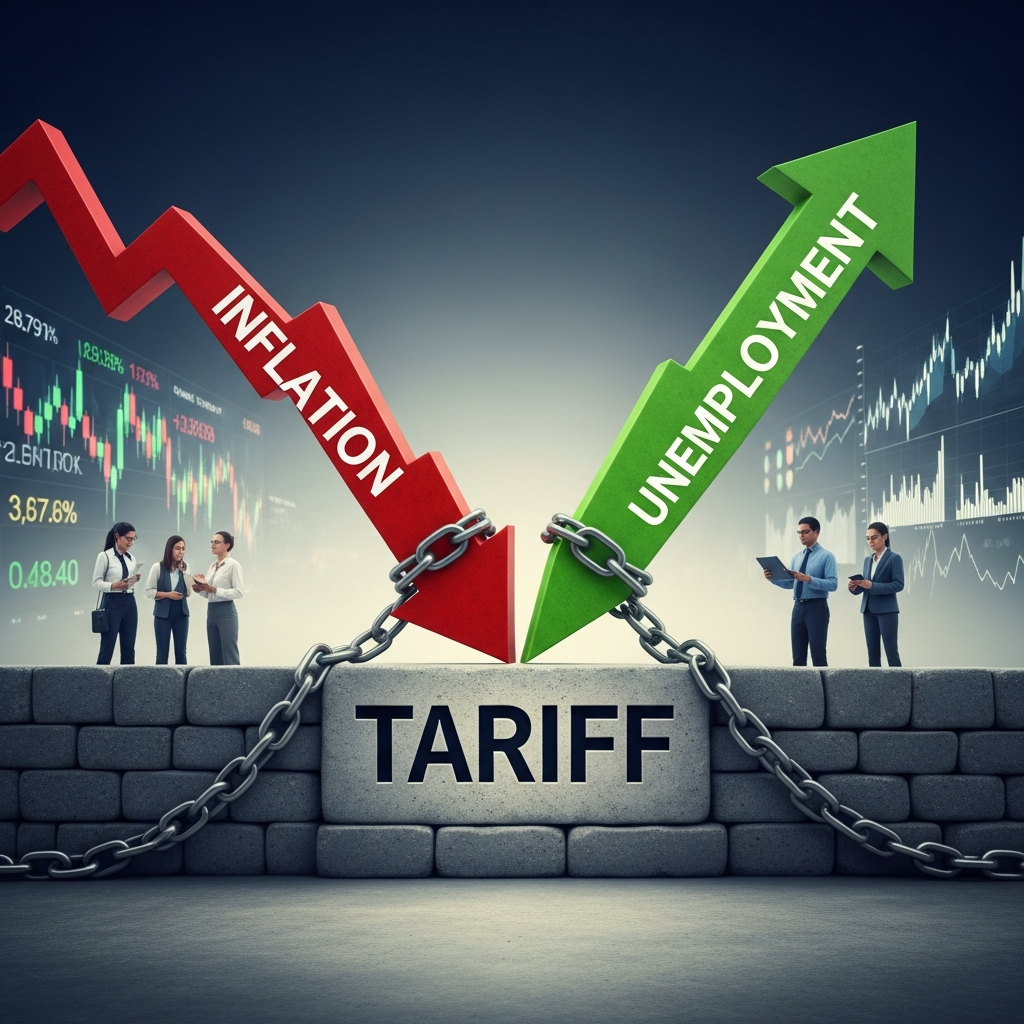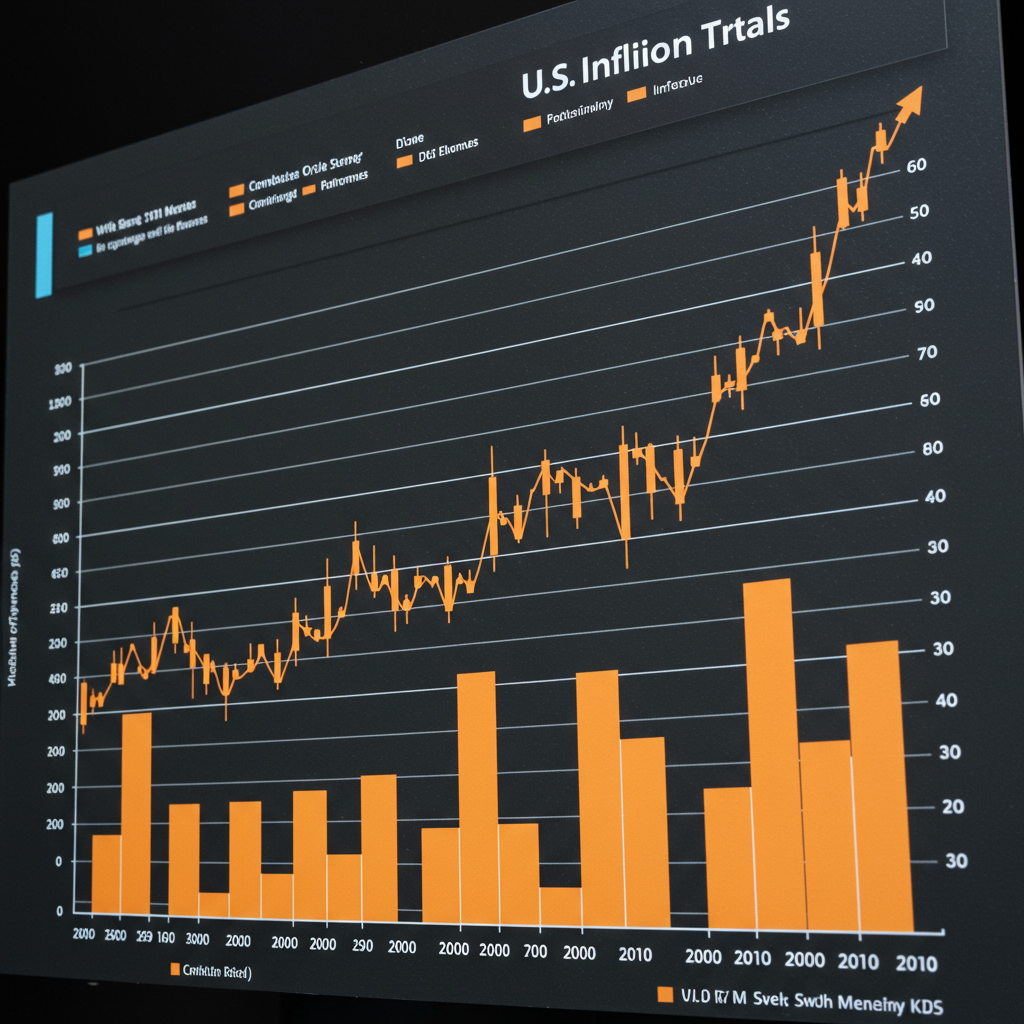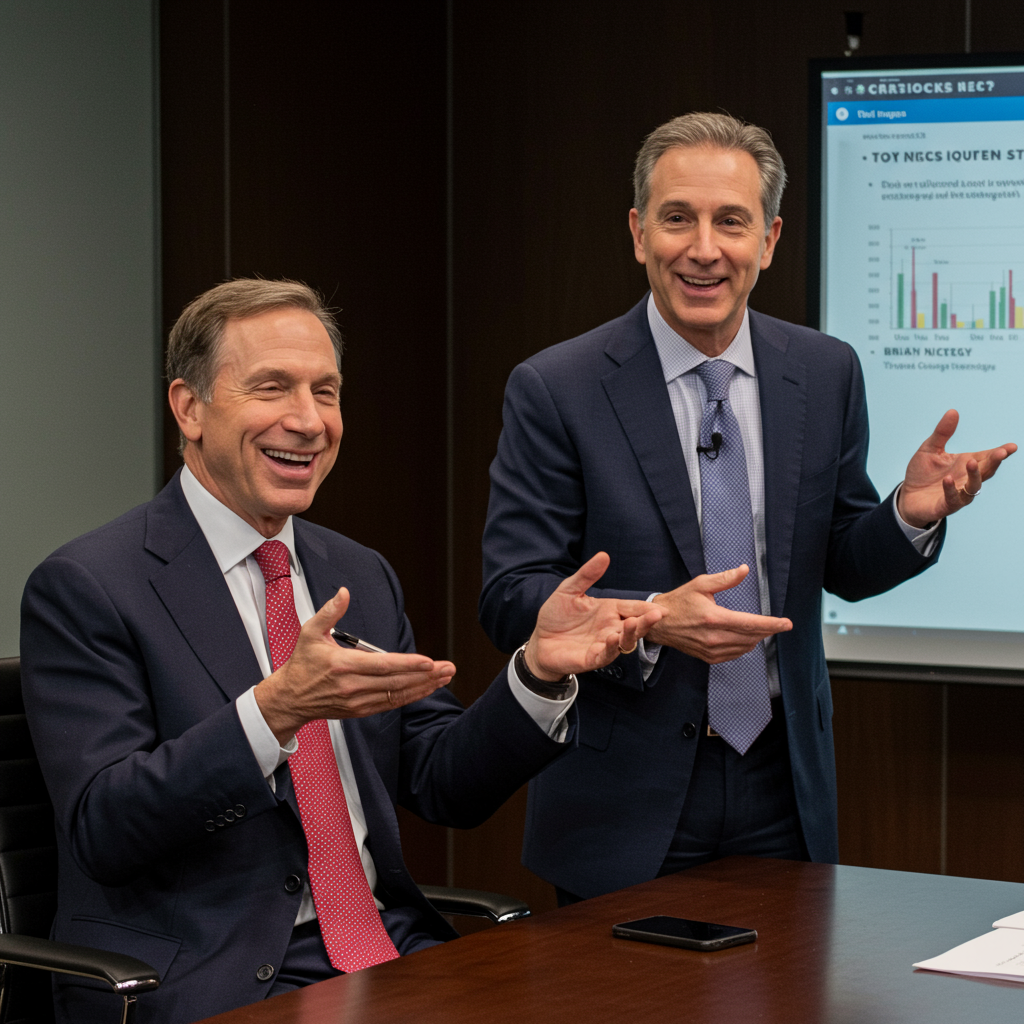New research from Federal Reserve economists challenges a long-held economic belief, revealing that tariffs may actually lead to lower inflation – but at a significant cost to employment and economic growth. This counter-intuitive finding suggests that import taxes, often seen as inflationary, act as a “demand shock” that ripples through the economy, disrupting financial markets and eroding consumer confidence. As policymakers grapple with inflation and affordability concerns, understanding the true impact of trade policies is more crucial than ever.
The Fed’s Counter-Intuitive Discovery on Tariffs
A groundbreaking study by San Francisco Fed researchers Régis Barnichon and Aayush Singh has upended conventional wisdom regarding tariffs. Their analysis, spanning 150 years of U.S. and international tariff data, concludes that higher tariffs paradoxically lead to reduced inflation in the short term. This outcome directly contradicts standard economic models, which typically forecast that tariffs, by increasing import costs, should cause the Consumer Price Index (CPI) to rise. Instead, the researchers posit that “tariff shocks appear to act as aggregate demand shocks—moving inflation and unemployment in the same directions.” This means tariffs hit demand so hard, they suppress prices.
The implications are profound, particularly amidst ongoing debates about trade policy and economic stability. While tariffs might eventually contribute to lower inflation figures, this relief comes at the expense of a weaker economy and a struggling labor market.
Unpacking the Mechanisms: How Tariffs Drive Down Prices
The San Francisco Fed study identifies two primary channels through which tariffs exert this demand-suppressing effect:
Uncertainty Shock: Tariffs introduce considerable uncertainty into the economic landscape. Businesses become hesitant to invest, and consumers grow cautious about spending. This erosion of confidence subsequently depresses overall economic activity, creating downward pressure on prices. For instance, a recent Dallas Fed Energy Survey highlighted a substantial jump in the “outlook uncertainty index” among energy firms, with many anticipating increased regulatory compliance costs and a decrease in customer demand due to steel import tariffs. This real-world uncertainty directly impacts operational decisions and overall economic sentiment.
Asset Price Decline: The imposition of tariffs can trigger a drop in asset prices, such as stock values. This “wealth effect” then weighs further on aggregate demand, leading to higher unemployment and, ultimately, lower inflation. Barnichon and Singh found compelling evidence for both channels, observing declines in stock prices and heightened stock market volatility following tariff announcements.
Historically, the data supports these mechanisms. Before World War II, a permanent 4-percentage-point increase in tariff rates was linked to a 2-percentage-point reduction in inflation and roughly a 1-percentage-point rise in unemployment. While post-WWII estimates show more uncertainty due to evolving economic structures, the trend of increased tariffs reducing inflation and worsening unemployment persists.
The Political Minefield: Tariffs, Inflation, and Public Frustration
The Fed’s findings land squarely in a contentious political arena, particularly influencing discussions around former President Donald Trump’s trade policies. Trump’s administration has consistently argued that its tariffs were not fueling inflation. The new research offers a nuanced perspective: any observed moderation in inflation under such policies could be a side effect of broader economic disruption, not a sign of successful price control.
This perspective starkly contrasts with Federal Reserve Chair Jerome Powell’s long-standing view. Powell and other policymakers have generally anticipated that tariffs would cause a one-time boost to inflation before prices would cool. The Fed has been caught in an “unprecedented no-win dilemma,” facing conflicting pressures to manage inflation and maintain employment, exacerbated by Trump’s unpredictable trade policies and public demands for lower interest rates.
The Fed’s Tightrope Walk: Balancing Mandates Amidst Pressure
The Federal Reserve operates under a dual mandate: fostering maximum employment and maintaining price stability. Trump’s renewed imposition of tariffs and his outspoken criticism of Powell have put the central bank in an “almost impossible situation.” Brian Coulton, chief economist at Fitch Ratings, warns that “a tariff shock will reduce real GDP growth and raise prices at the same time.” This creates a scenario where the action needed to maintain full employment (cutting rates) conflicts with the action needed to contain inflation (holding or raising rates).
Powell has adopted a “wait and see” approach, holding interest rates steady despite intense political pressure. He emphasizes that the Fed cannot be “pre-emptive” because the appropriate response to the data is uncertain, especially with current inflation hovering just above the Fed’s 2% target (core personal consumption expenditures at 2.6% annually). This contrasts with 2019, when Powell cut rates three times to cushion the economy amidst similar tariff threats, but with inflation below 2%. Today’s higher inflationary environment makes pre-emptive cuts far riskier.
The Affordability Crisis: Beyond Just Inflation Numbers
While the technical debate on tariffs and inflation rages, voters are increasingly concerned with everyday affordability. Former President Trump faces significant challenges in convincing the public he can alleviate the high cost of living. His promises, such as tariff rebates and extended mortgages, have been criticized as “half-formed” and “gimmicky” by experts like Bharat Ramamurti, former deputy director of Biden’s National Economic Council. Trump recently rescinded tariffs on specific commodities like beef and coffee, reportedly responding to voter anger over rising costs.
Democrats are employing a similar strategy against Trump as Republicans used against Biden. They argue that Trump’s policies, including tariffs that increase consumer prices and cancellations of clean energy projects (leading to higher utility bills), worsen inflation. Gene Sperling, a senior Biden adviser, suggests that many Americans correctly attribute recent price increases to Trump’s “erratic trade policy.” Data shows consumer prices accelerated from 2.3% annually in April (when Trump launched tariffs) to 3% in September.
Michael Strain, director of economic policy studies at the American Enterprise Institute, notes “eerie similarities” in how both Biden and Trump have handled inflation, often downplaying the problem and proposing checks. Ultimately, even if inflation rates were to decrease, this might not be enough for voters. As Paul Donovan of UBS Global Wealth Management explains, “affordability is subtly different, and may linger,” leading to continued public frustration directed at incumbent governments, regardless of who is in power.
Frequently Asked Questions
What is the Fed study’s main finding about tariffs and inflation?
A new study by San Francisco Fed researchers found that tariffs, contrary to conventional belief, tend to lower inflation in the short term. They act as a significant “demand shock” that disrupts economic activity, leads to increased unemployment, and erodes consumer and investor confidence. This reduction in overall demand then puts downward pressure on prices, rather than increasing them as standard economic models would predict.
How do political pressures impact the Federal Reserve’s decisions regarding tariffs and interest rates?
Political pressure, especially from the executive branch, creates a “no-win dilemma” for the Federal Reserve. President Trump’s public demands for lower interest rates and his implementation of tariffs create conflicting economic signals. Tariffs can simultaneously reduce economic growth (suggesting lower rates) and raise prices (suggesting higher rates). This forces the Fed to navigate a complex environment where its dual mandate of price stability and maximum employment moves in opposite directions, making a “wait and see” approach often necessary.
What are the trade-offs for consumers and the economy if tariffs are used to lower inflation?
While tariffs might contribute to lower inflation, the primary trade-off is a weaker economy and a less robust labor market. The Fed study indicates that tariffs achieve lower inflation by depressing aggregate demand, increasing unemployment, and slowing overall economic activity. For consumers, this could mean higher job insecurity and reduced purchasing power, even if the rate of price increases slows. Businesses face heightened uncertainty, which can lead to reduced investment and hiring, impacting long-term economic growth and ultimately, affordability.
Conclusion
The latest research from the Federal Reserve presents a compelling, albeit complex, picture of how tariffs truly impact the economy. While the conventional wisdom points to tariffs as inflationary, the evidence suggests they act as a profound demand shock, leading to lower inflation numbers at the expense of employment and broader economic activity. This understanding forces a re-evaluation of trade policy strategies, especially for leaders facing public frustration over affordability. The interplay between tariffs, inflation, unemployment, and political pressure creates a challenging landscape for both policymakers and the everyday consumer, highlighting the critical need for nuanced economic approaches that consider the full spectrum of trade-offs.




